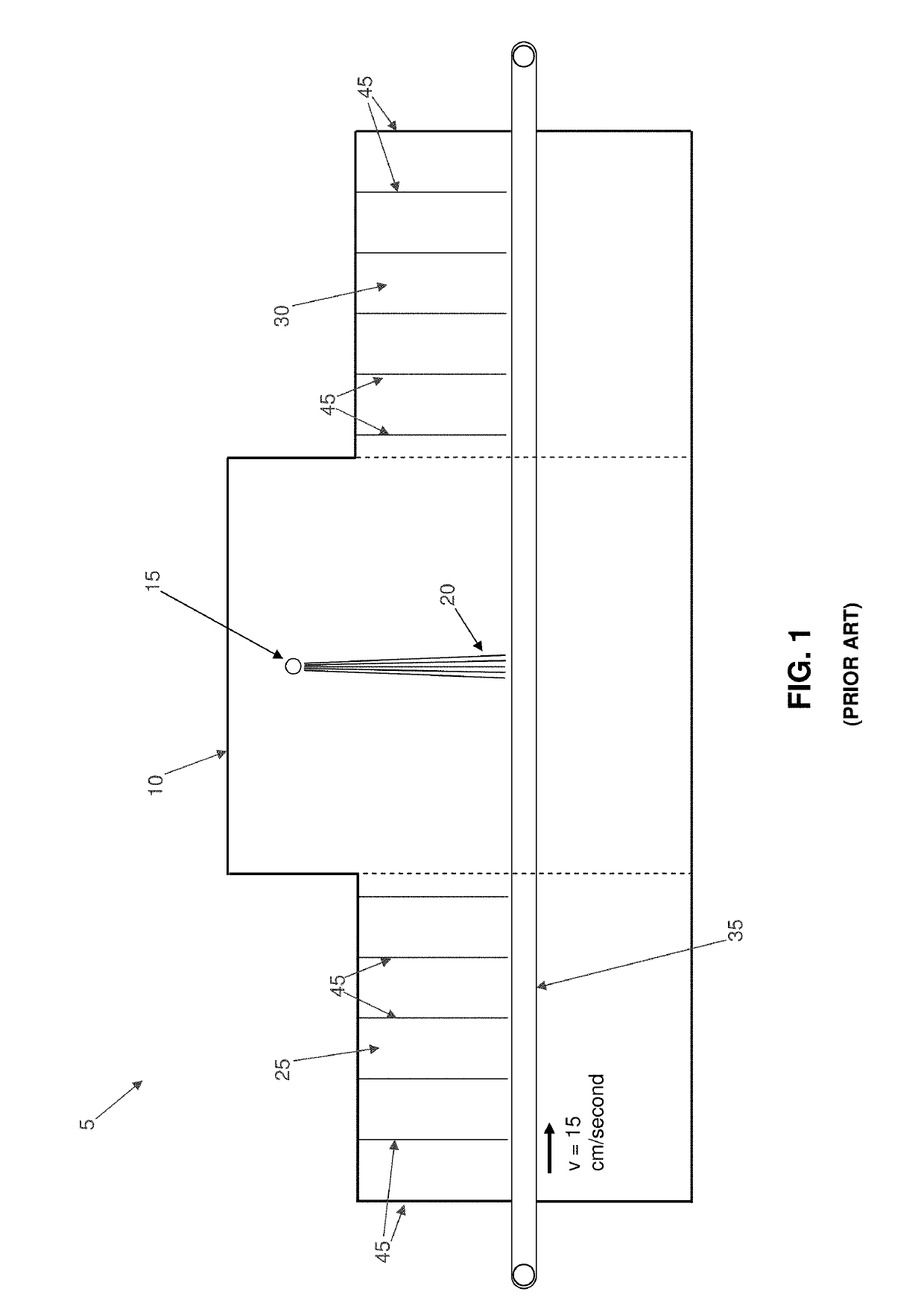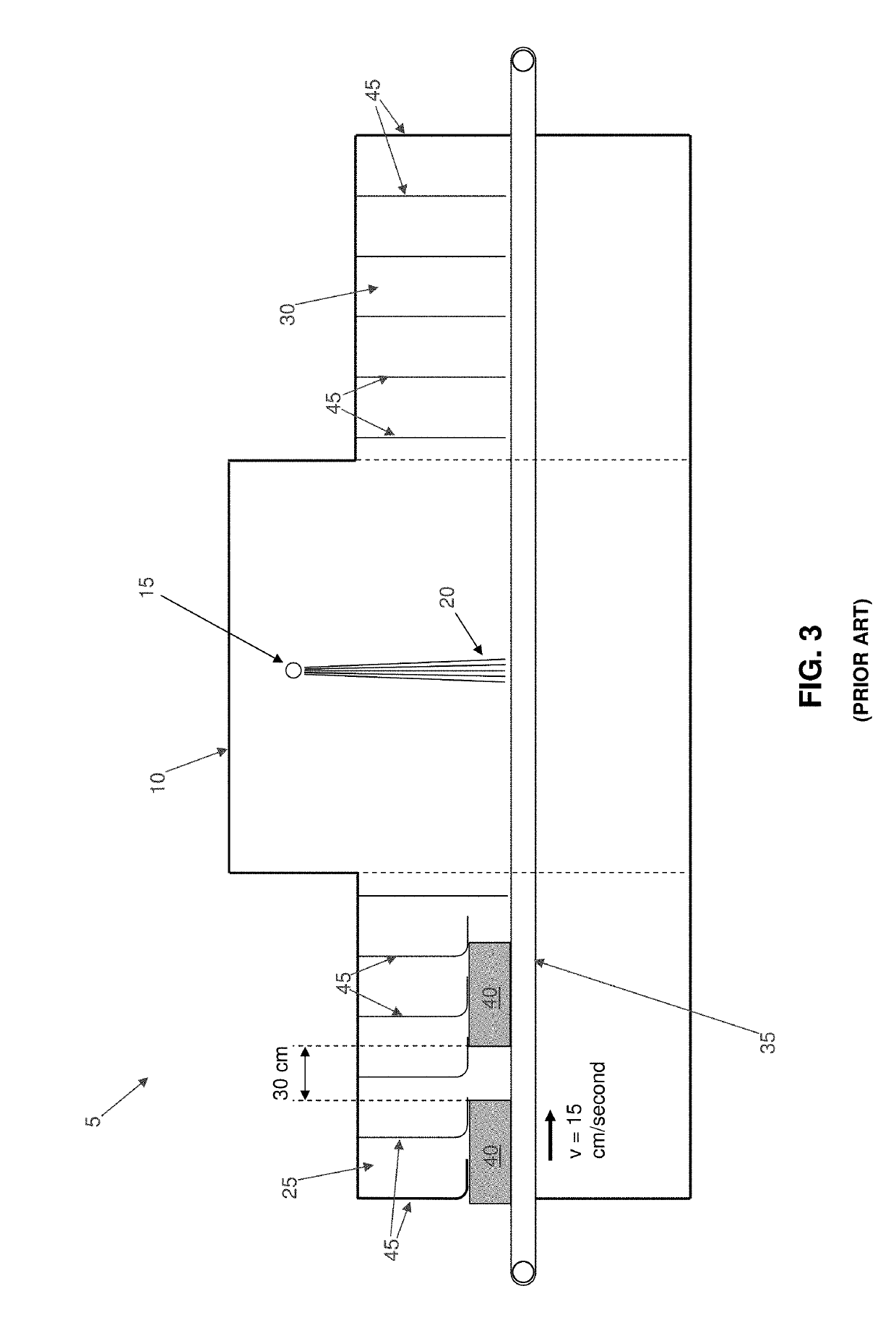Computed tomography (CT) security inspection system with enhanced x-ray shielding
a computed tomography and security inspection technology, applied in the field of xray security inspection systems, can solve the problems of not being able to provide at least six curtains, the effectiveness of these older x-ray security inspection systems is grossly inadequate, and it takes more than six installed curtains to provide them. achieve the effect of speeding up the conveyor belt speed through the system, reducing the cost of installation, and improving the quality of imag
- Summary
- Abstract
- Description
- Claims
- Application Information
AI Technical Summary
Benefits of technology
Problems solved by technology
Method used
Image
Examples
Embodiment Construction
[0033]The present invention comprises the provision and use of a new and improved computed tomography (CT) security inspection system with enhanced X-ray shielding.
[0034]More particularly, to further understand the X-ray shielding problem associated with prior art computed tomography (CT) security inspection systems and to fully appreciate the novel solution to this problem which is provided by the present invention, it should first be recognized that a standard tray length in the U.S. is approximately 60 cm (approximately two feet), and in Europe the standard tray length is approximately 70 cm. As an actual example, it is generally desired to have a CT security inspection system operate at 600 trays per hour. This is one tray every six seconds. Then, at 600 trays per hour, the distance between successive trays would be as follows for various conveyor speeds.
Tray SpacingAverage SpaceAverage Space(at 6 secondsBetween Trays InBetween TraysConveyor Speedper tray)U.S.In EuropeAt 15 cm p...
PUM
| Property | Measurement | Unit |
|---|---|---|
| speed | aaaaa | aaaaa |
| speed | aaaaa | aaaaa |
| thickness | aaaaa | aaaaa |
Abstract
Description
Claims
Application Information
 Login to View More
Login to View More - R&D
- Intellectual Property
- Life Sciences
- Materials
- Tech Scout
- Unparalleled Data Quality
- Higher Quality Content
- 60% Fewer Hallucinations
Browse by: Latest US Patents, China's latest patents, Technical Efficacy Thesaurus, Application Domain, Technology Topic, Popular Technical Reports.
© 2025 PatSnap. All rights reserved.Legal|Privacy policy|Modern Slavery Act Transparency Statement|Sitemap|About US| Contact US: help@patsnap.com



